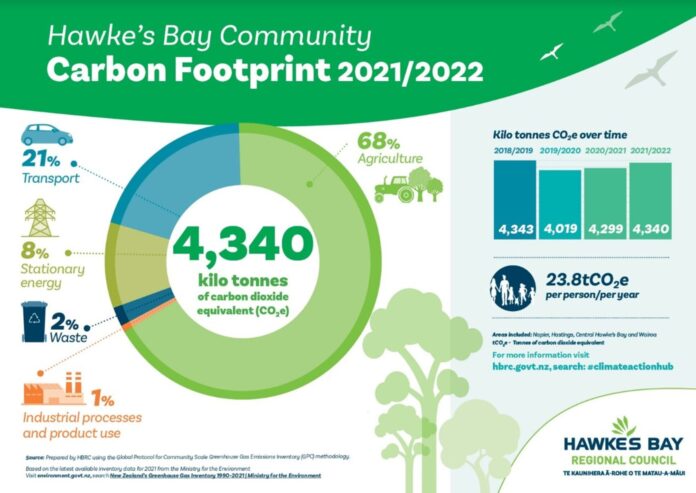The Hawke’s Bay Regional Council, as part of the Joint Committee on Climate Action, this week released the latest greenhouse gas emissions assessment for the region.
It is the fourth annual assessment released and shows that emissions are not declining in line with the reductions needed to achieve the goal of the region being carbon neutral by 2050, the Council said today.
Overall gross emissions have not changed over the last four years. Over the 2021/22 period the region emitted 4,340 kilotonnes of carbon dioxide equivalent (CO2 e) with 68% coming from agricultural sources. The next biggest source of emissions was 21% coming from transport.
Hawke’s Bay Regional Council Senior Climate Scientist, Dr Nariefa Abrahim-Bennet says “Monitoring our regional emissions is a crucial part of knowing where we can get the best impact to transition to a lower carbon economy.
“It’s great to be collaborating with council and industry partners to collate and monitor this data. This information is essential in developing a regional emissions reduction plan.”
Dr Abrahim-Bennet noted that agriculture and transport are the main contributors to emissions in Hawke’s Bay.
“Although the overall regional profile is static, the district profiles are very different, so challenges and opportunities differ accordingly.”
She said most of Napier’s emissions come from transport (57%) and only 5% from agriculture. Considerable forestry sequestration in Wairoa, however, means that the district is already climate positive, sequestering more carbon than emitted.
The report will be tabled at council meetings across the region and be used to guide future planning decisions.
The Joint Committee on Climate Change is made up of representatives from the four district councils and the regional council.
Download the report at Managing our greenhouse gas emissions | Hawke’s Bay Regional Council (hbrc.govt.nz).
The emissions are calculated using the Global Protocol for Community Global Protocol for Community Scale Greenhouse Gas Emissions Inventory (GPC) methodology including emissions from Stationary Energy, Transport, Waste (solid waste and wastewater), Industrial Processes and Product Use (IPPU), Agriculture and Forestry and using the most recent emission factors, activity data and methodologies.



